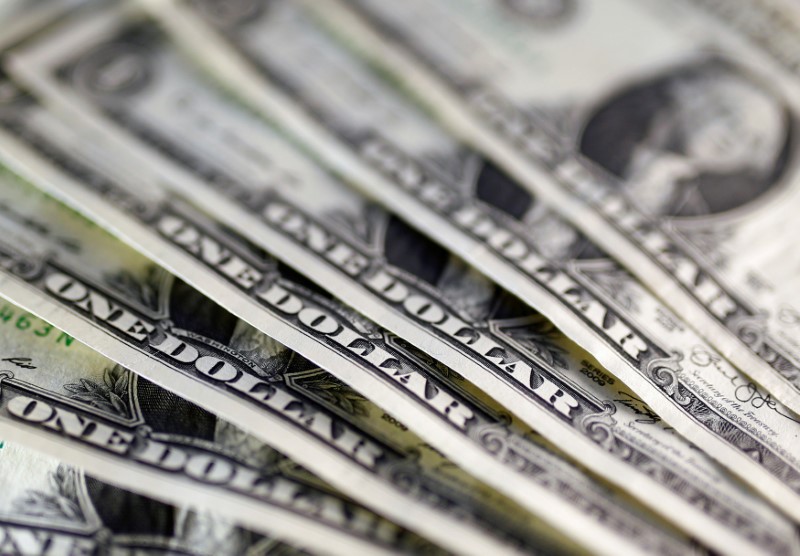 © Reuters.
© Reuters.
By Gina Lee
Investing.com – The dollar was down on Friday morning in Asia, holding steady amid small market moves. However, it looks set to see weekly losses as improved risk appetite continue to apply pressure.
The U.S.Dollar Index that tracks the greenback against a basket of other currencies inched down 0.03% to 91.983by 9:49 PM ET (1:49 AM GMT), hovering near a three-month low seen overnight.
The USD/JPY pair was down 0.23% to 104.02.
The AUD/USD pair inched down 0.01% to 0.7360, after climbing to a near three-month high on Thursday. Across the Tasman Sea, the NZD/USD pair edged up 0.11% to 0.7013.
The USD/CNY pair inched up 0.04% to 6.5770.
The GBP/USD pair inched up 0.03% to 1.3359. The pound saw a near three-month high as well on Thursday, with investors look towards progress on Brexit talks between the U.K. and the European Union (EU). EU chief negotiator Michel Barnier is reportedly due to speak with some EU fisheries ministers later in the day to discuss the current state of the trade discussions.
Volume and moves were thin overall, with the U.S. market closed for the Thanksgiving holiday.
“Today will be another quiet day, with almost no catalyst to move the market. The dollar, however, is broadly pressured on month-end selling,” Barclays (LON:BARC) senior strategist Shinichiro Kadota told Reuters.
Optimism over several COVID-19 vaccine developers, including Pfizer Inc (NYSE:PFE) and Moderna Inc (NASDAQ:MRNA), announcing positive results for their offerings over the last two weeks, put the dollar under pressure as investors sought risker assets. Also boosting the trend was the beginnings of a transition from incumbent President Donald Trump's administration to that of President-elect Joe Biden.
Although Barclay’s Kadota saw the dollar remaining under pressure in the short-term as vaccine hope linger, market expectations see it firming in mid-term.
“When looking at how economies have rebounded in the July quarter, the United States grew and made a strong rebound. In a scenario where vaccines become gradually available next year and economies return to normal, the U.S. will probably be one of the most resilient among developed countries. And I think that will create a dollar-favorable environment,” he added.
Across the Atlantic, European Central Bank (ECB) chief economist Philip Lane and the minutes from the ECB’s October meeting further confirmed the expected announcement of stimulus measures when the central bank meets in December.
The minutes showed policymakers in agreement that complacency is not an option as Europe continues to struggle through a second wave of COVID-19 cases and beginning to prepare for more stimulus measures.
Lane also warned that tolerating “a longer phase of even lower inflation” would hurt consumption and investment as well as cementing expectations for low price growth in the long run.
The euro saw little change against the dollar but did reach a more than two-months high on Thursday in the wake of the minutes’ release.
Leave a comment
